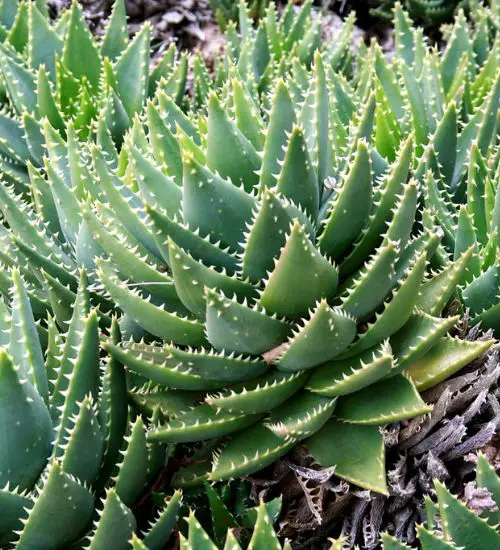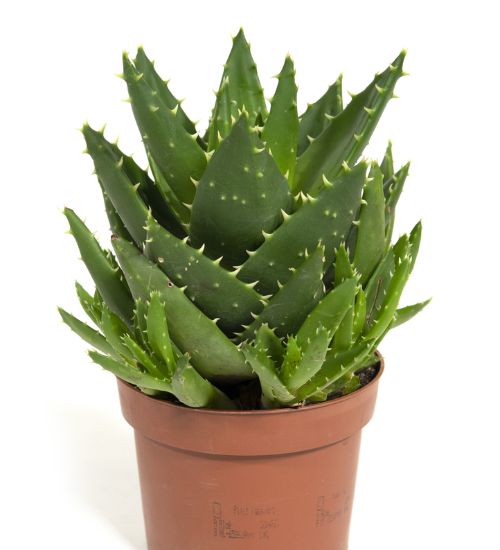Sun: full sun to partial shade
Water: Typical water needs for a succulent
Temperature: Zone 10a from 30° F to 35° F (-1.1 ° C to 1.7° C)
Winter Survival: Not cold hardy
Propagation: leaves, offsets, seeds
Flower: in the summer
Flower Type:
Toxic: Can be toxic to humans and animals
Dormant: summer
Space Requirement: Indoors & Outdoors
Common Problems: Plants may rot if overwatered, pests
Where to buy Aloe Perfoliata?
Basc Care for Aloe Perfoliata
Watering
What you need to remember is that this type of succulents needs to be watered for every 2 weeks
You can water your succulent more than often in extreme conditions but make sure that the soil is completely dry before watering your succulent again.
Fertilizing
Only feed this succulent during its active growing seasons which means winter. Use the right fertilizer applied in the right amounts. Applying half-strength balanced fertilizer every month or so is recommended for optimal results.
Do not fertilize during summer as the plant is dormant.
Sun & Location Requirements for "Mitre Aloe, Rubble Aloe"
Aloe Perfoliata needs full sun to partial shade in order to thrive. While this variety needs plenty of bright light, it is important not to place it in direct sunlight for extended periods of time as this can cause damage or scorching to the leaves and stems. A shadier spot with indirect light could be just what "Mitre Aloe, Rubble Aloe" needs.
Aloe Perfoliata is not cold hardy and does not survive in freezing conditions. However, there are certain strategies that can be used to help the plant thrive despite the chill of winter. Proper drainage and insulation are essential for succulent X during periods of extreme cold. Placing a layer of mulch or gravel on the soil around the plant can also help keep it warm.
Aloe Perfoliata also benefits from some indirect light throughout the day as well, so make sure you give it enough space to soak up light without becoming too exposed to heat.
Propagation
Propagating succulents by leaves is a great way to grow new plants from existing ones. Simply cut off a few healthy leaves from the mother plant and place them on top of a potting mix. Water the soil regularly, keeping it moist but not soggy, and soon you'll have brand new succulents!
Succulents can be propagated easily by taking offsets from the mother plant and replanting them in fresh soil. The offset will eventually grow into a new succulent that is identical to its parent.
Propagating Aloe Perfoliata from seeds is a great way to produce new plants without relying on cuttings or divisions. It's important to look for healthy, dark and plump seeds that are slightly sticky when touched. The soil should be pre-mixed with well-draining potting mix, before evenly sowing the seeds and pressing them into the surface. To ensure successful germination, gentle misting of the soil should be done and placed in indirect light.
Toxicity

Aloe Perfoliata has high levels of calcium oxalate, a substance that is toxic to both humans and animals. Ingesting parts of this succulent can cause skin irritation, difficulty breathing, blurred vision and vomiting in severe cases. Keep children and pets away from ""Mitre Aloe, Rubble Aloe"" and regularly inspect for signs of damage or consumption.
Pests and Diseases
Aloe Perfoliata can be affected common pests and diseases like most of the other succulents such as snails and scale insects.
If you do spot any of pest signs, you can treat your succulent using below methods.
- Snails: clean infected plants, soapy water.
- Scale insects: quarantine, clean infected plants, soapy water.
Besides that, to prevent serious health issues from happening, keep your succulent in a well-ventilated area and check it regularly for any signs of pests or health problems.


